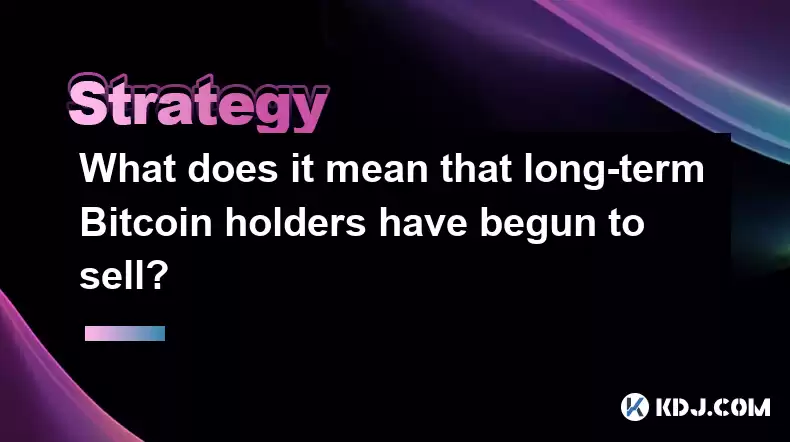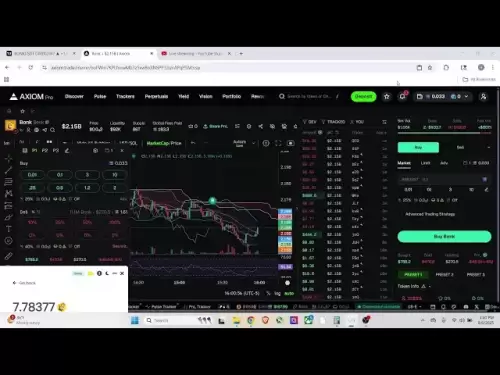-
 Bitcoin
Bitcoin $116200
1.84% -
 Ethereum
Ethereum $3841
6.86% -
 XRP
XRP $3.070
4.25% -
 Tether USDt
Tether USDt $1.000
0.02% -
 BNB
BNB $774.4
1.72% -
 Solana
Solana $172.3
5.17% -
 USDC
USDC $0.9999
0.01% -
 Dogecoin
Dogecoin $0.2136
6.85% -
 TRON
TRON $0.3391
1.21% -
 Cardano
Cardano $0.7667
5.76% -
 Hyperliquid
Hyperliquid $39.10
4.30% -
 Sui
Sui $3.724
9.37% -
 Stellar
Stellar $0.4139
5.86% -
 Chainlink
Chainlink $17.35
6.09% -
 Bitcoin Cash
Bitcoin Cash $573.7
2.52% -
 Hedera
Hedera $0.2518
5.39% -
 Ethena USDe
Ethena USDe $1.001
0.02% -
 Avalanche
Avalanche $22.68
3.57% -
 Litecoin
Litecoin $120.4
3.89% -
 UNUS SED LEO
UNUS SED LEO $8.951
-0.40% -
 Toncoin
Toncoin $3.312
4.62% -
 Shiba Inu
Shiba Inu $0.00001263
4.23% -
 Uniswap
Uniswap $10.14
6.89% -
 Polkadot
Polkadot $3.778
5.04% -
 Dai
Dai $1.000
0.01% -
 Monero
Monero $276.9
-4.52% -
 Bitget Token
Bitget Token $4.394
1.57% -
 Cronos
Cronos $0.1475
6.05% -
 Pepe
Pepe $0.00001081
5.27% -
 Aave
Aave $274.5
7.59%
What does it mean that long-term Bitcoin holders have begun to sell?
Long-term Bitcoin holders selling can signal market shifts; it may increase selling pressure and affect prices, depending on market absorption and demand.
Apr 20, 2025 at 12:56 pm

The phenomenon of long-term Bitcoin holders beginning to sell their holdings is a significant event within the cryptocurrency market. It indicates a shift in behavior among investors who have historically held onto their Bitcoin for extended periods. Long-term holders are typically those who have kept their Bitcoin for over a year, often believing in the long-term value and potential of the cryptocurrency. When these investors start selling, it can signal various market dynamics and potential shifts in sentiment.
Understanding Long-Term Holders
Long-term Bitcoin holders are often referred to as "HODLers," a term derived from a misspelling of "hold" that became popular within the crypto community. These individuals or entities typically have a strong belief in Bitcoin's future and are less likely to be swayed by short-term market fluctuations. They may have accumulated Bitcoin during its early days or during significant dips in the market, holding onto it with the expectation of future growth.
Reasons for Selling
There are several reasons why long-term Bitcoin holders might decide to sell their holdings. One primary reason could be profit-taking. If Bitcoin's price has significantly increased since their initial purchase, holders might decide to cash in on their gains. Another reason could be portfolio rebalancing, where investors adjust their asset allocations to maintain a desired risk level or to invest in other opportunities.
Additionally, market sentiment can play a crucial role. If long-term holders perceive that the market is reaching a peak or that a significant correction is imminent, they might choose to sell to avoid potential losses. Regulatory changes or economic factors such as inflation or changes in monetary policy can also influence their decision to sell.
Impact on the Market
When long-term Bitcoin holders begin to sell, it can have a notable impact on the market. Increased selling pressure can lead to a decrease in Bitcoin's price, especially if the volume of sales is significant. This can trigger a cascade effect, where other investors, seeing the price drop, might also decide to sell, further exacerbating the downward trend.
Conversely, if the market absorbs the selling pressure without a significant price drop, it could indicate strong underlying demand and confidence in Bitcoin's value. Market liquidity can also be affected, as large sales by long-term holders can increase the available supply of Bitcoin on exchanges.
Analyzing the Data
To understand the extent to which long-term holders are selling, analysts often look at on-chain data. Metrics such as the spent output profit ratio (SOPR) can provide insights into whether coins are being sold at a profit or loss. Another useful metric is the HODL Waves, which show the distribution of Bitcoin's supply based on the time coins have been held.
For instance, if a significant portion of Bitcoin that has been held for over a year is suddenly being moved to exchanges, it could indicate that long-term holders are preparing to sell. Blockchain analytics firms like Glassnode and Chainalysis provide such data, helping investors and analysts make informed decisions.
Case Studies of Long-Term Holder Selling
There have been several instances in Bitcoin's history where long-term holders have sold their holdings, each with different outcomes. For example, in 2017, during the peak of the bull market, many early adopters and miners who had held onto their Bitcoin for years decided to sell, contributing to the subsequent price correction.
Another notable case was in 2021, when the Silk Road Bitcoins, which had been seized by the U.S. government and held for several years, were auctioned off. This event led to a temporary increase in selling pressure but was eventually absorbed by the market.
Strategies for Investors
For investors looking to navigate a market where long-term holders are selling, several strategies can be employed. Diversification is key, as it helps mitigate the risk associated with any single asset. Investors might also consider dollar-cost averaging, where they invest a fixed amount of money at regular intervals, regardless of the market's volatility.
Technical analysis can also be useful, as it helps investors identify potential entry and exit points based on historical price patterns. Additionally, staying informed about market sentiment through social media, news, and forums can provide valuable insights into the behavior of other investors.
Frequently Asked Questions
Q: How can I identify if long-term holders are selling their Bitcoin?
A: You can identify long-term holder selling by monitoring on-chain metrics such as the Spent Output Profit Ratio (SOPR) and HODL Waves. These metrics are available through blockchain analytics platforms like Glassnode and Chainalysis. Look for significant movements of Bitcoin that has been held for over a year to exchanges, as this could indicate selling activity.
Q: What should I do if I notice long-term holders are selling their Bitcoin?
A: If you notice long-term holders selling, consider your investment strategy. Diversification and dollar-cost averaging can help mitigate risks. Additionally, use technical analysis to identify potential entry and exit points, and stay informed about market sentiment to make informed decisions.
Q: Can the selling of Bitcoin by long-term holders lead to a market crash?
A: While the selling of Bitcoin by long-term holders can increase selling pressure and lead to price drops, it does not necessarily result in a market crash. The impact depends on various factors, including the volume of sales, market liquidity, and overall demand for Bitcoin. If the market absorbs the selling pressure without significant price drops, it could indicate strong underlying demand.
Q: Are there any historical examples of long-term holder selling affecting the Bitcoin market?
A: Yes, there are several historical examples. In 2017, during the peak of the bull market, many early adopters and miners sold their long-held Bitcoin, contributing to a subsequent price correction. Another example is the auction of Silk Road Bitcoins in 2021, which temporarily increased selling pressure but was eventually absorbed by the market.
Disclaimer:info@kdj.com
The information provided is not trading advice. kdj.com does not assume any responsibility for any investments made based on the information provided in this article. Cryptocurrencies are highly volatile and it is highly recommended that you invest with caution after thorough research!
If you believe that the content used on this website infringes your copyright, please contact us immediately (info@kdj.com) and we will delete it promptly.
- Ollama Turbo & GPT-OSS: Revolutionizing AI Model Accessibility and Speed
- 2025-08-07 20:29:33
- Bitcoin Ordinals: NFTs Evolving Bitcoin or a Fleeting Fad?
- 2025-08-07 20:29:33
- BlockchainFX, Bitcoin Swift, Crypto Presales: What's the Hype?
- 2025-08-07 19:10:13
- Pepe Dollar (PEPD) vs. SPX6900: The Meme Coin Battle of 2025
- 2025-08-07 19:50:12
- XRP Investment Regret: Are You Missing Out on the Next Big Thing?
- 2025-08-07 19:50:12
- XRPINU: More Than Just a Meme? Roadmap, Liquidity, and the Future of Funny Money
- 2025-08-07 19:56:46
Related knowledge

How to avoid common crypto investment mistakes?
Jul 13,2025 at 01:35am
Understanding the Risks of Crypto InvestmentInvesting in cryptocurrency can be highly rewarding, but it also comes with significant risks. One of the ...

What is a long-short crypto strategy?
Jul 15,2025 at 10:56am
Understanding the Basics of a Long-Short Crypto StrategyA long-short crypto strategy is an investment approach where traders simultaneously take long ...

What is a long-short crypto strategy?
Jul 11,2025 at 01:28pm
Understanding the Basics of Long-Short Crypto StrategyA long-short crypto strategy is an investment approach where traders take both long and short po...

How to use the RSI indicator for crypto?
Jul 12,2025 at 03:56pm
Understanding the RSI Indicator in Cryptocurrency TradingThe Relative Strength Index (RSI) is a momentum oscillator used to measure the speed and chan...

Is copy trading a good strategy for crypto beginners?
Jul 12,2025 at 08:28am
Understanding Copy Trading in the Cryptocurrency MarketCopy trading is a strategy where novice traders replicate the trades of experienced investors a...

How to build a crypto portfolio with $1000?
Jul 13,2025 at 08:14pm
Understanding the Basics of Cryptocurrency InvestmentBuilding a crypto portfolio with $1000 starts with understanding the fundamentals of cryptocurren...

How to avoid common crypto investment mistakes?
Jul 13,2025 at 01:35am
Understanding the Risks of Crypto InvestmentInvesting in cryptocurrency can be highly rewarding, but it also comes with significant risks. One of the ...

What is a long-short crypto strategy?
Jul 15,2025 at 10:56am
Understanding the Basics of a Long-Short Crypto StrategyA long-short crypto strategy is an investment approach where traders simultaneously take long ...

What is a long-short crypto strategy?
Jul 11,2025 at 01:28pm
Understanding the Basics of Long-Short Crypto StrategyA long-short crypto strategy is an investment approach where traders take both long and short po...

How to use the RSI indicator for crypto?
Jul 12,2025 at 03:56pm
Understanding the RSI Indicator in Cryptocurrency TradingThe Relative Strength Index (RSI) is a momentum oscillator used to measure the speed and chan...

Is copy trading a good strategy for crypto beginners?
Jul 12,2025 at 08:28am
Understanding Copy Trading in the Cryptocurrency MarketCopy trading is a strategy where novice traders replicate the trades of experienced investors a...

How to build a crypto portfolio with $1000?
Jul 13,2025 at 08:14pm
Understanding the Basics of Cryptocurrency InvestmentBuilding a crypto portfolio with $1000 starts with understanding the fundamentals of cryptocurren...
See all articles

























































































